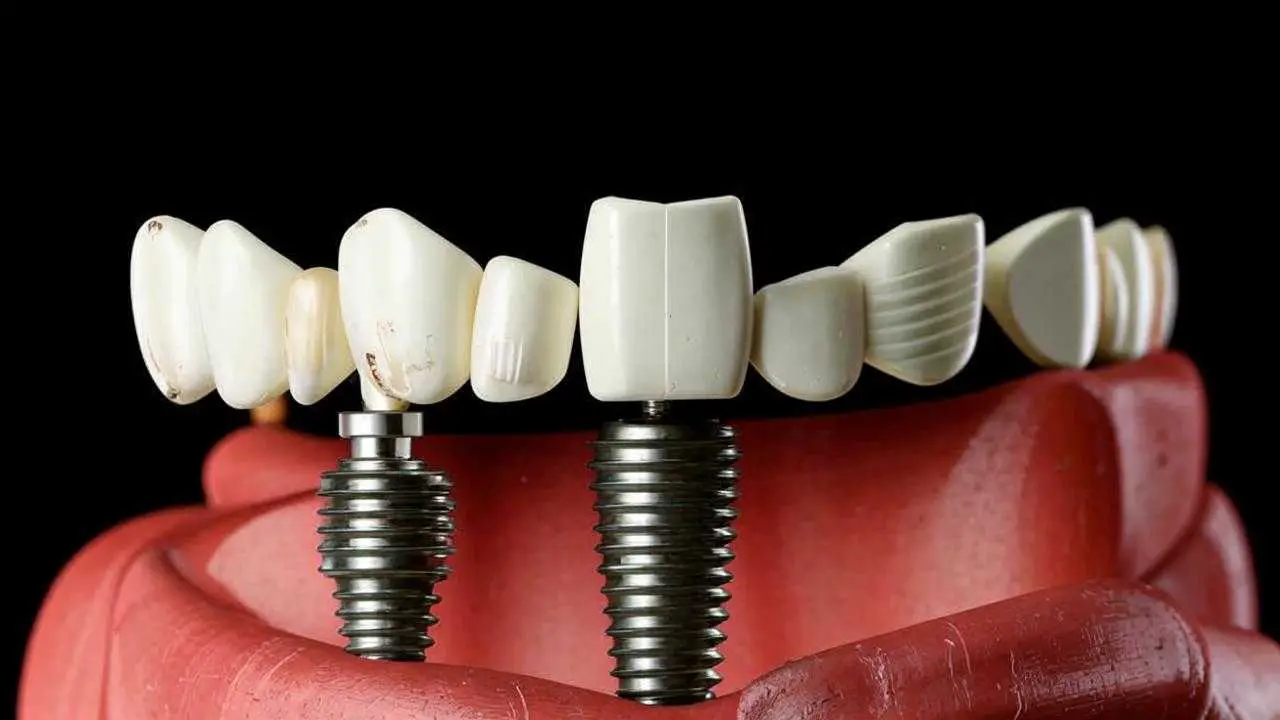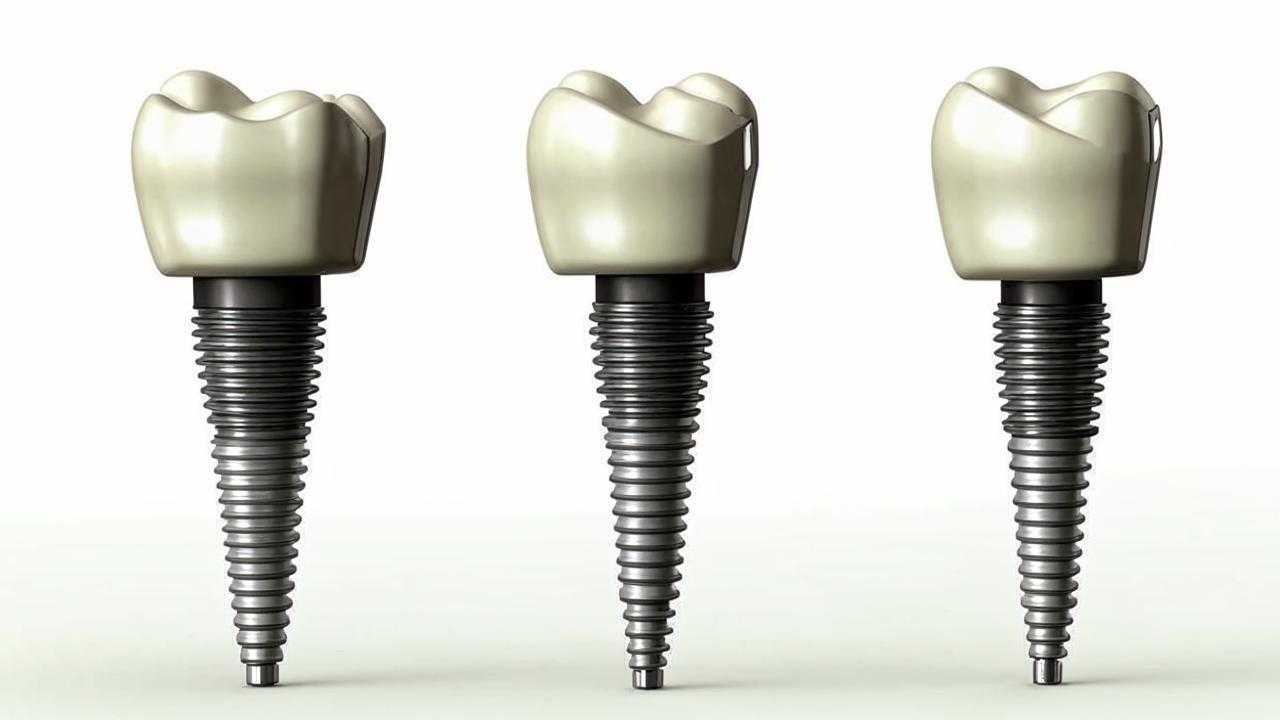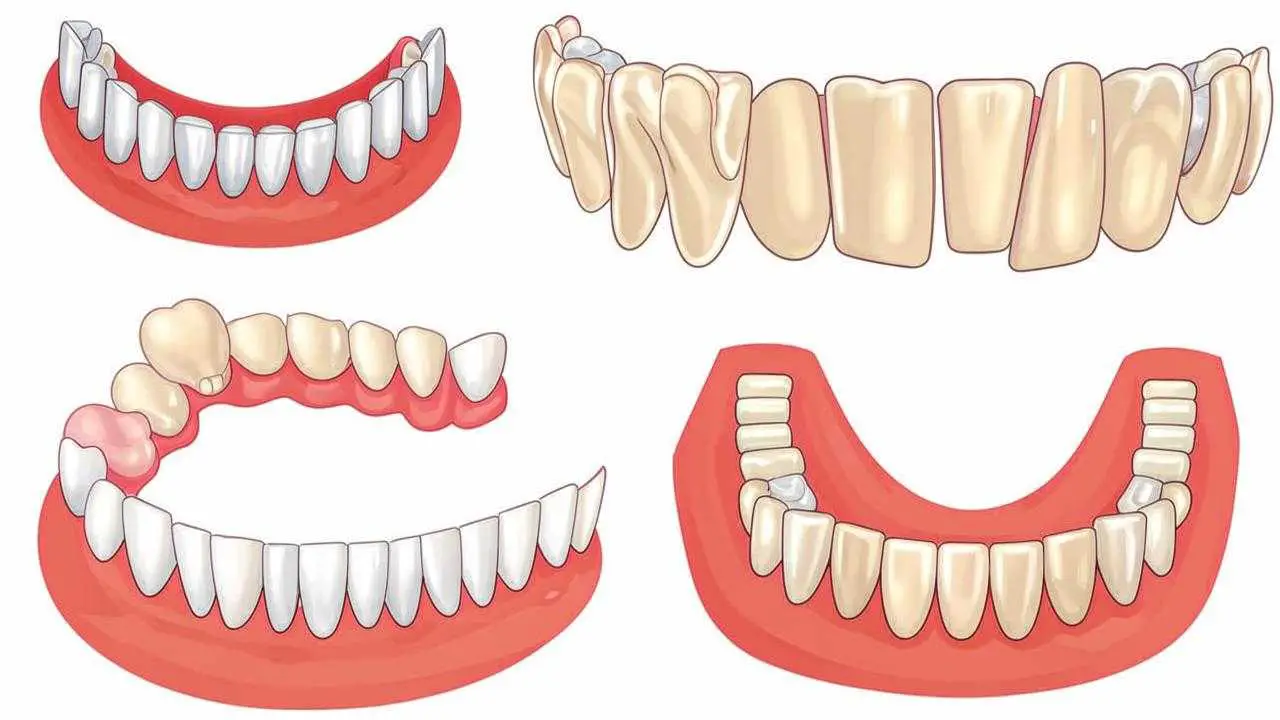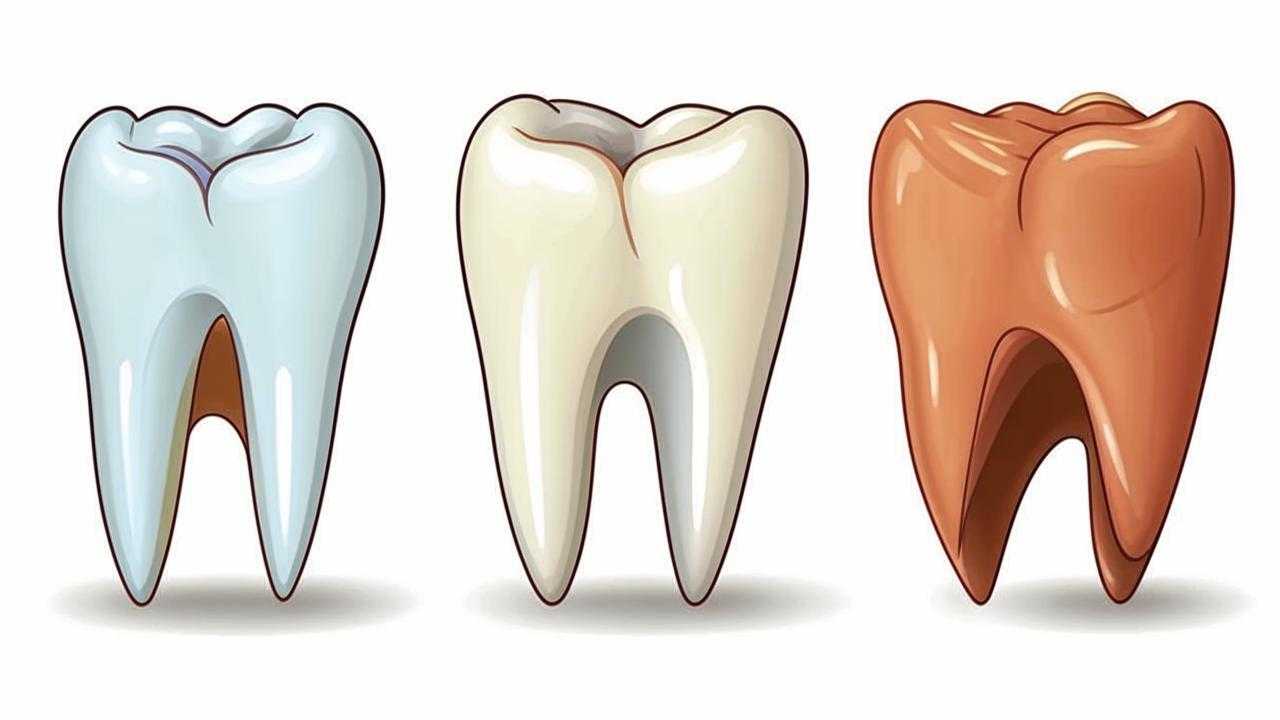The loss of even one tooth is accompanied by changes in the functionality of the entire row. Neighboring teeth are distorted, shifted to the side of the missing tooth. Bone loss begins in the empty area. There is no need to talk about the violation of chewing function and psychological discomfort. Implantation and classical prosthetics will help to restore the smile in this case. But dental implantation completely solves the problem of functionality and aesthetics of the tooth row. It is a physiological, durable method of prosthetics.
Methods of restoration of missing teeth
For the installation of any prosthetic structure, a support is necessary. Removable prostheses can be fixed directly to the gums, while fixed prostheses are supported by your own teeth or implants.
- Removable prosthetics
Removable structures based on nylon or acrylic (full plate prosthesis) are fixed in the mouth by suction to the gums. They are indicated for completely edentulous jaws. Removable devices are inexpensive, quite comfortable, do not need complex care. In case of extended defects of the tooth row, burettes and partial plate constructions are used. Their installation requires supporting teeth, to which the prosthesis is fixed with hooks (clampers) or locking elements (attachments). Mini implants can be used to secure removable prostheses more securely.
Fixed prosthetics
Non-removable solutions (dental bridges) are more securely fixed on the supporting teeth or implants. They look more natural, unlike removable structures do not rub the mucosa. Indications for installation: a single defect or the absence of up to 3 consecutive dental units. The bridge is installed on 2 supporting teeth, which are previously depulped and ground for artificial crowns (even if the supports are absolutely healthy).
- الأطراف الصناعية على الغرسات
Implantation is a surgical intervention involving implantation of an artificial root made of titanium into the jawbone, followed by the installation of a prosthetic structure. The implant fully assumes the functions of the natural tooth root, acting as a support for the upper part – crown, bridge, full denture. Implantation helps to solve any clinical problem – from a single restoration and restoration of several missing consecutive units, to the restoration of the entire dentition. Some treatment protocols can even restore a complete row on 4 or 6 implants.
- Combined prosthetics
This is a simultaneous combination of several implant techniques. The combination protocol involves combining implant systems in a single clinical case. The most effective approach in cases of complete adentia is to select the optimal type of implant for each section of the jawbone. This will make it possible to replace the tooth row even in case of pronounced bone atrophy, without preliminary volume augmentation.
Requirements to the methods
The main principle of the restoration of the dentition is the full restoration of functionality and aesthetics.
On the aesthetic side, the prosthetic structure should not differ in appearance from natural teeth. Good artificial crowns do not differ from natural teeth in transparency and enamel shade. The prosthesis should fit tightly to the gum, with a neat, natural contour.
Full functionality implies that the artificial teeth will fully participate in chewing, speech, proper redistribution of mechanical load. When installing a prosthesis with support on the gum or own teeth, the load falls on them, destroying the supporting units. This contributes to the resorption of bone under the prosthesis, the formation of sores on the mucosa, gingival subsidence.
Only implantation can completely cope with such a task. The implant replaces the natural root – withstands high mechanical load, correctly redistributes it to the entire jaw, prevents bone atrophy.
Advantages and disadvantages of implantation
Advantages:
- Full restoration of masticatory and aesthetic functions;
- Lifelong service life;
- Does not require depulping, turning of neighboring units of the tooth row;
- It is used for various defects of the tooth row – single, multiple, end defects, complete adentia of the jaws;
- Installation of orthopedic construction of any kind – removable, non-removable, conditionally removable.
Disadvantages:
- Contraindications;
- Not always possible without preliminary osteoplasty;
- Long time of engraftment;
- Difficult rehabilitation period after surgery;
- Probability of complications;
- High price.
As an argument against – the duration of the procedure. The term of final prosthetics with implant-supported implants in classical implantation is 3-7 months after implantation of the titanium root. This is due to the fact that the osseointegration of the implant takes 3-6 months. Prosthetics take another 10 days to 1 month.
Modern implant protocols restore the dentition in 1 to 3 days, using one-step, immediate-loading implant techniques.
Which is better – removable denture or implant
Full removable dentures present a plastic base that mimics the gum, on which artificial crowns are attached. Partial removable are supplemented with other elements – metal framework, hooks, locks.
The orthopedic design fits tightly to the gum, embracing the alveolar ridge and firmly adhering to the mucosa. For strong fixation, special gels, creams are recommended. Removable prostheses are made of soft plastic materials (nylon, polyurethane, acrylic, Acry Free, DENTAL-D), which makes them more comfortable and allows them to adhere to the gum more precisely. The designs come in temporary and permanent.
Advantages:
- Suitable for periodontal disease;
- easy to maintain;
- Can be quickly adjusted and relocated;
- speed of manufacturing (from taking an impression to the installation of the structure takes 2-3 weeks);
- low price.
Disadvantages:
- Long adaptation period(2-4 weeks or more);
- Restore chewing function only by 50-60%;
- Restrictions in eating (no hard foods, too hot food and drinks);
- chafing of the gums;
- impair diction (for a period of habituation);
- do not stay in the mouth well enough;
- cause discomfort during emotional conversations, coughing, laughing;
- contribute to bone resorption;
- a gap is formed between the gum and the structure, where bacterial plaque and food residues accumulate, which leads to the development of chronic inflammation.
The only alternative to removable prosthetics is dental implantation. Orthopedic structures are securely fixed on implants. Modern protocols allow titanium roots to be implanted in patients even with an aggravated anamnesis. Many systemic diseases are not considered contraindications to implantation today. Implant prostheses do not require long habituation, do not disturb diction, prevent bone atrophy.
Clip-on prosthetics or dental implants
Clip-on prosthesis refers to a removable type of orthopedic constructions. The design is a metal frame (arch, buregel) with acrylic gum and artificial crowns. They are used for the restoration of extended dental defects. A modern representative of bracket (arch) constructions is Quattro Ti (Quadrotty) dental prosthesis.
The availability of the prosthetic structure is determined by the presence of supporting teeth to which it is attached. With end defects or complete adentia, such products are not used.
Available types of attachment:
- Clammers – metal or plastic hooks that encompass the support.
- Attachments – a locking or hinged device consisting of two elements that are inserted into each other to securely fix the prosthesis. One part of the lock is attached to the support unit, the second part is located on the prosthetic structure.
- Telescopic crowns – double crowns used to anchor a bracket system. It has two parts – one (inner) is attached to the support with cement, the second (outer) is connected to the prosthesis, acting as a fixation element of the latter.
Advantages:
- مثبتة بإحكام في تجويف الفم;
- Strong, durable;
- easy care and maintenance;
- do not traumatize the mucosa;
- can be used in case of mobility of supporting teeth;
- do not create discomfort during wear;
- are made of biocompatible materials.
Disadvantages:
- Prolonged habituation (2-4 weeks or more);
- Possible allergy to the metal of the framework;
- all chewing load is placed on the supporting teeth and gums;
- clasps are visible at close range;
- attachments or telescopic crowns are only possible after depulping and grinding of the supporting teeth;
- regular relining and replacement of the structure;
- does not prevent bone atrophy;
- it is not always possible to repair the prosthesis.
Buchel constructions are considered a reliable method of dental prosthetics, but still has disadvantages. A reasonable solution would be to replace the teeth with fixed construction on implants. Implant-supported prosthetics is devoid of the disadvantages that the bracket system demonstrates. In terms of functionality and aesthetics, dental implantation is the winner in both cases.
Denture bridge or implant
A dental bridge is a common method of dental prosthetics. It is a fixed structure used for replenishing the tooth row in case of loss of 1 to 3 consecutive units. Structurally, it is several crowns – two supporting crowns (1 on each side) and 1-3 intermediate crowns, designed to replace the missing dental units. Since the bridge rests on two living teeth (previously depulped, ground), it is impossible to replace the end defect with this method.
Such orthopedic products are made of metal-ceramic or ceramic, aluminum oxide, zirconium dioxide, metal composite, metal-plastic. The service life of the bridge directly depends on the material from which it is made. The most fragile is the construction made of metal-plastic. With careful handling, it will last 2-3 years. A zirconium bridge will last 8-10 years or longer.
Advantages:
- Secure retention in the mouth;
- large selection of materials for fabrication;
- Aesthetics;
- strength, durability;
- high wear resistance (metal-ceramic, zirconium oxide bridges);
- occasionally possible prosthetics without grinding and depulping of supporting units (bridge on micro-locks, inlays).
Disadvantages:
- Requires depulping and grinding of the supporting units;
- Uneven redistribution of the mechanical load;
- Bone atrophy in the areas of missing dental units;
- destruction of supporting teeth;
- increase in the number of dentures to be fitted.
The main alternative to the dental bridge is prosthetics on implants. The technology will compensate not only the crown part, but also the tooth root, achieving the desired aesthetics. The price of implantation is comparable to the installation of a bridge structure – the cost depends on the brand of the implant system, selected materials. Dental implantation is the best way to restore a tooth row, providing maximum benefits for the patient.
Dentures or implantation – what is better to choose?
| Classic prosthetics | Implantation | |
|---|---|---|
| Degree of impact on neighboring teeth (supporting teeth) | Requires prior depulping and grinding | Neighboring tooth units are not involved |
| Traumatic placement | Non-traumatic placement | Implants are surgically implanted through an incision, gingival micropuncture or in the bed of a tooth after tooth extraction. |
| Timing of restoration of chewing ability | Limited functionality | Full function of mastication immediately after fixation of the prosthetic structure. |
| Degree of bone atrophy | Bone loss under the prosthesis is accelerated | Implants prevent bone atrophy and help restore bone volume. |
| Reliability of fixation | Can be mobile, especially if periodontal disease is present. | The prosthetic system is firmly fixed to the abutments with screws or cement. |
| راحة الاستخدام | Discomfort when adapting to any prosthesis. Removable structures – for the entire period of wear | The prosthetic system immediately feels like your own teeth. |
| Aesthetics | Relatively high | Artificial dental crowns look identical to natural teeth. |
| Difficulty of care | More difficult to care for | Care like your own teeth |
Which will last longer
Classic removable prosthetic systems (braces, acrylic structures, etc.) have a lifespan of 1 to 7 years. A bridge prosthesis – up to 10 years, depending on the material.
Under equal conditions, a crown or bridge placed on implants will last 15-20 years. At the same time, implants last a lifetime.
Which is cheaper
When calculating costs, you should take into account the lifespan of dental implants compared to classic dentures.
An option for comparison is replacing 1 lost tooth:
- implant placement with a metal-ceramic crown – 48,000-55,000 rubles (depends on the method of fixation).
- bridge prosthesis with 3 metal-ceramic crowns – 45 000-75 000 rubles (depends on the base material and fabrication technique).
After 8-10 years, with a probability of 90% install a new bridge prosthesis, you will need another 45-75 thousand rubles, and taking into account inflation, this amount will be more. But this is provided that the supporting teeth remain in their original state. If it is necessary to restore the supporting teeth, the price will rise even more. This will negate the savings.
With a new bridge every 10 years, supported by the supporting teeth, implantation is cheaper and much more reliable. Implants are done once and for all. Installation of a metal-ceramic crown to replace a worn-out one will be required in 15-20 years at the earliest.
Thanks to protocols, materials of the latest generation, reconstruction of the dental row by implantation with a minimum of contraindications. It is used for patients with periodontal diseases, HIV and other complex pathologies.
Opinion of the doctor
Summarizing the above, we can confidently assert that permanent prosthetics on implants is an effective, reliable way to restore the dental row. Classic methods are gradually becoming a thing of the past. Doctors unequivocally recommend implantation, because the technology, even with complete adentia of both jaws, returns full functionality of the teeth.
At first glance, dental implants are expensive. But considering that the implant will last a lifetime, while performing the functions of a natural tooth, the price of the procedure is justified. Implantation is the only way to restore teeth with the ability to prevent jawbone atrophy.



